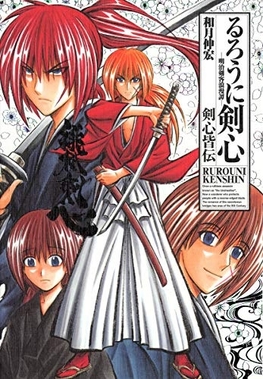The Representation of Women in 'Kenshin' and Its Influence on Gender Roles

The Representation of Women in Kenshin and Its Influence on Gender Roles
Kenshin, also known as Rurouni Kenshin, is a popular Japanese manga series written and illustrated by Nobuhiro Watsuki. It has been adapted into various forms of media, including anime, live-action films, and video games. The series is set in the Meiji period of Japan and follows the story of Himura Kenshin, a former assassin turned wandering swordsman. While the series may mainly revolve around the male protagonist Kenshin, the portrayal of women in the series is also worth examining.
One of the main female characters in the series is Kamiya Kaoru, a young woman who runs a dojo. Kaoru is depicted as strong, determined, and skilled in martial arts. She is also shown to be kind, caring, and empathetic towards others. Her character breaks away from the traditional roles of women in Japanese society during that time period, where women were expected to be obedient and subservient to men.
Another notable female character is Makimachi Misao, a ninja who joins forces with Kenshin and his friends in their fight against evil. Misao is portrayed as energetic, feisty, and independent, breaking away from the stereotype of women being delicate and passive. She is not afraid to take on dangerous missions and is often seen fighting alongside the male characters, showcasing her strength and capabilities.
Aside from these two prominent female characters, Kenshin also features a diverse cast of supporting female characters who are just as capable and influential. The series highlights their strengths and contributions, showing that women are not limited to traditional gender roles but can also be powerful and influential figures in society.
The Influence on Gender Roles
Kenshin's portrayal of women challenges the stereotypical gender roles that were prevalent in Japanese society during the Meiji period. While the series is set in a historical context, it presents a refreshing depiction of women that is not limited or defined by their gender. This can have a significant impact on the perception of gender roles in today's society.
The series also conveys the message that women can be just as capable and strong as men, and deserve to be treated with respect and admiration. This can influence how both men and women view gender roles and break away from the rigid expectations set by society.
Breaking Stereotypes and Empowering Women
Aside from challenging traditional gender roles, Kenshin also showcases female characters who defy stereotypical beauty standards. For instance, Makimachi Misao is a small and petite woman, but her character is not defined by her physical appearance. She is respected for her skills and fierce personality, proving that one's worth does not solely depend on their appearance.
The diverse representation of women in Kenshin can also serve as a source of empowerment for women and girls. Through the various characters and their strengths, the series sends a powerful message to women that they are capable and can achieve anything they set their minds to.
In Conclusion
Kenshin's depiction of women is a prime example of how media can challenge traditional gender roles and empower women. The series portrays female characters as strong, capable, and influential figures, breaking away from stereotypes and expectations set by society. It serves as a reminder that women should not be defined or limited by their gender, but should be celebrated for their unique qualities and contributions.
So, the next time you watch or read Kenshin, keep an eye out for the portrayal of women and appreciate the impact it can have on shaping our perception of gender roles.



